The competition in the three-row SUV market has become increasingly fierce with the emergence of several strong new players. This has put pressure on the 2023 Honda Pilot to deliver its best performance yet in order to maintain its competitiveness. The fourth-generation Pilot has undergone significant upgrades to meet these expectations, featuring enhanced power, larger interior space, and the greatest off-road capabilities in the model’s history.
Honda has made it easier for customers to choose the right Pilot for their needs by offering it in five distinct trim levels: Sport, EX-L, Touring, Elite, and the off-road TrailSport.
During our brief test drive, we aimed to determine if the latest upgrades to the Pilot have made it a formidable rival to our favorite mid-size SUVs, the Kia Telluride and Hyundai Palisade. The following is a comparison of the 2023 Honda Pilot with its competition.
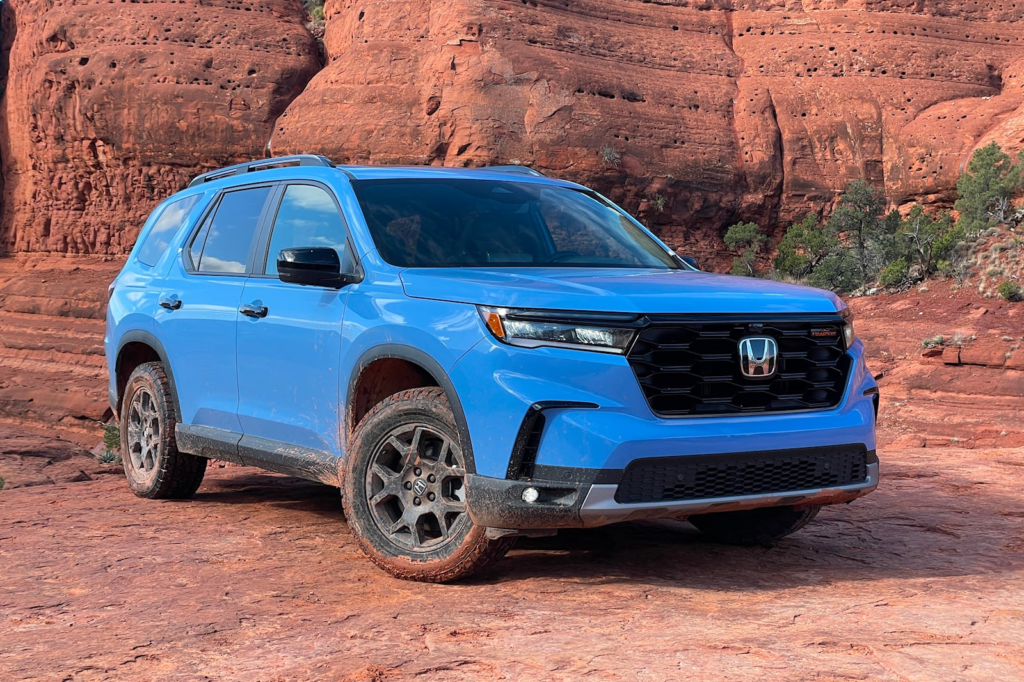
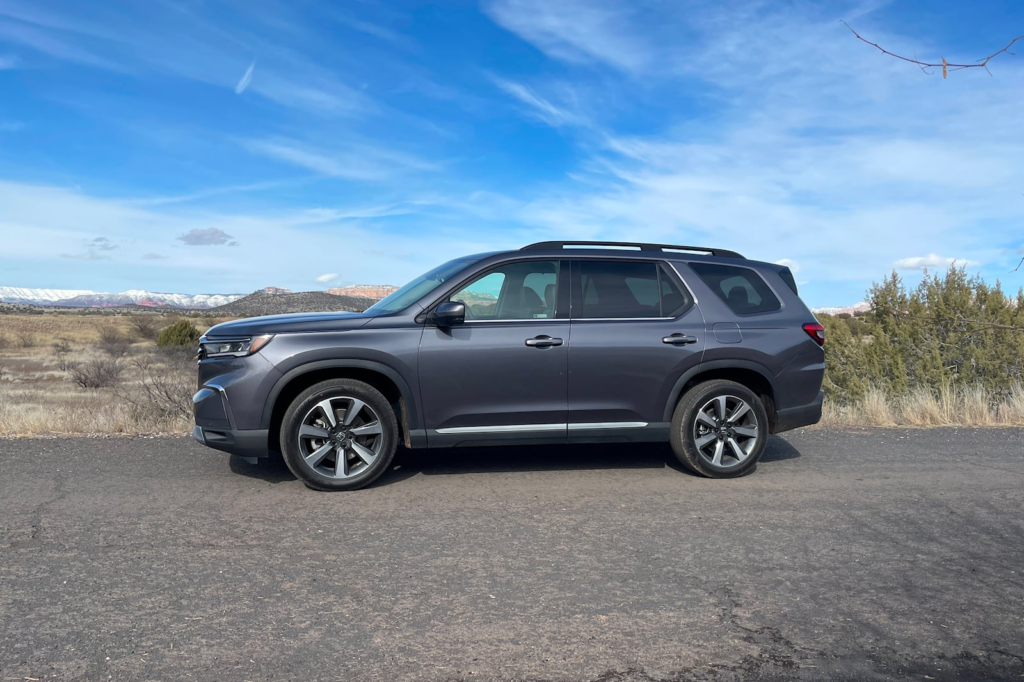
Exterior: Back To Boxy
The first and second generation of the Honda Pilot had a square and rugged appearance that was well-received by customers. However, with the third generation, the design became more rounded, giving the Pilot a minivan-like appearance that may have turned off potential buyers who preferred a more truck-like SUV. In response to this, Honda has returned to the square and upright design that made the first two generations of the Pilot so popular in the fourth generation.
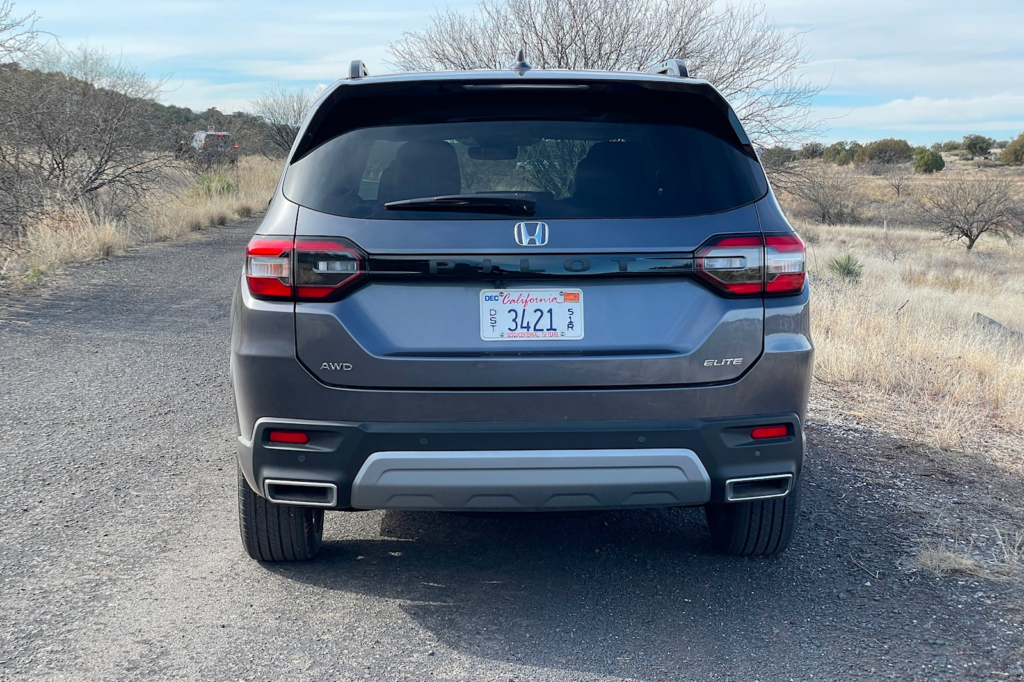
The new design features a larger greenhouse, LED headlights as standard, and a more pronounced dash-to-axle ratio. The fourth-generation Pilot is 3.4 inches longer and slightly taller than its predecessor, with the TrailSport model standing at 72 inches. The Sport, Touring, and Elite trims come equipped with 20-inch wheels, while the EX-L and TrailSport trims feature 18-inch wheels, with the latter’s Shark Gray alloys wrapped in all-terrain tires, a first for the Pilot. The TrailSport trim level also stands out with its gloss black front grille, orange badging, one-inch suspension lift, front and rear recovery points, integrated Class III trailer hitch, and steel underbody skid plates.
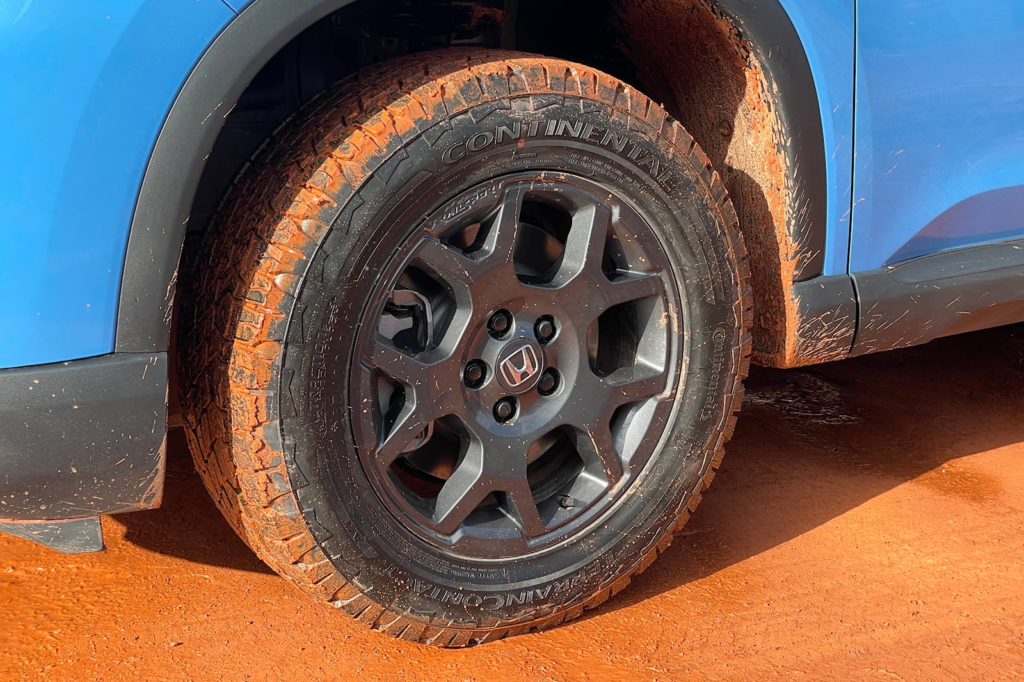
All models of the Pilot are eligible for the HPD (Honda Performance Development) Package, which includes black or bronze wheels as an option. The Pilot’s color palette has been expanded to include Radiant Red, as well as a TrailSport-exclusive Diffused Sky Blue Pearl color, which looks fantastic.
Performance: A New V6
Honda claims that the Pilot’s 3.5-liter V6 engine is completely new and not just an updated version of the previous V6. With 285 horsepower and 262 lb-ft of torque, it is the most powerful V6 engine Honda has ever offered in the US market. This new level of power is achieved through the implementation of a new dual overhead camshaft design and direct injection system. However, the new engine also marks the end of Honda’s legendary VTEC system, meaning it will no longer produce the characteristic crossover sound. Changes to the engine have reduced emissions, but the increased weight and wheel size of the new Pilot have slightly impacted fuel efficiency, with Honda reporting fuel economy at 19/27/22 mpg city/highway/combined for the FWD model, 19/25/21 mpg for the AWD model, and 18/23/20 mpg for the TrailSport.
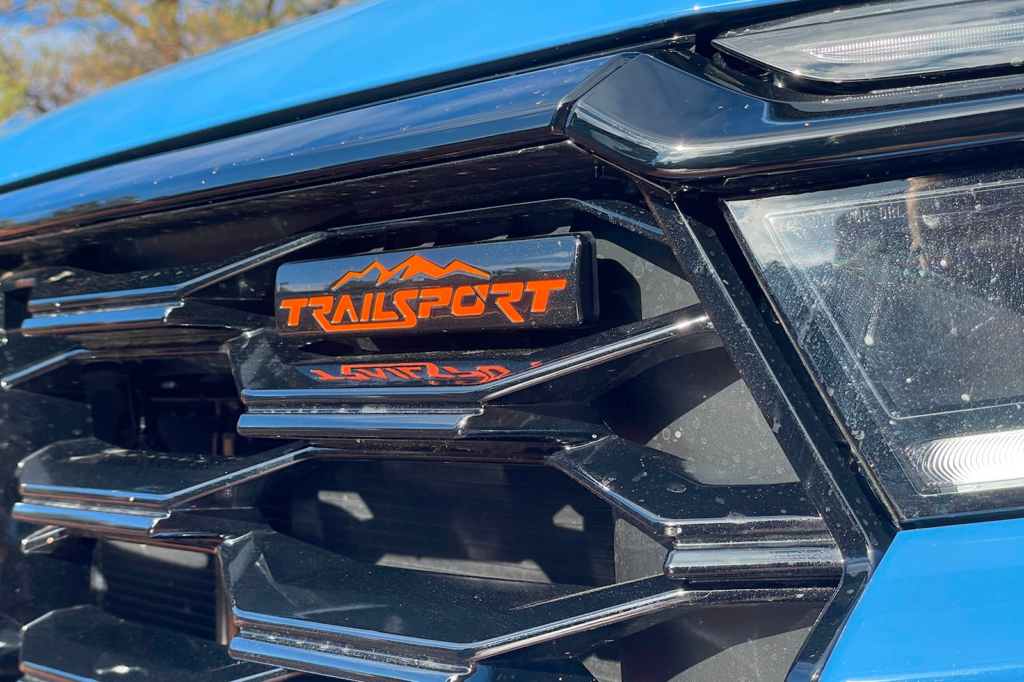
The new V6 engine is paired with Honda’s 10-speed automatic transmission, a significant improvement over the previous ZF automatic. The 10-speed automatic transmission allows for up to four gears to be downshifted at once, providing better acceleration. The Pilot has a towing capacity of 5,000 pounds with AWD and 3,500 pounds with 2WD.

Driving Impressions: Quieter Ride
The Honda Pilot has made strides in creating a more peaceful and comfortable cabin experience for its drivers. With the use of more acoustic materials, such as spray foam and sound-deadening sheets, as well as thicker carpeting and acoustic glass, road noise is effectively reduced. Additionally, the active noise cancelation system helps to further decrease unwanted noise and enhance engine sound. Although the new V6 engine may not feel excessively powerful, especially in areas with high altitudes, the ride comfort is smooth and the driving experience is serene.
The handling of the Pilot has also been improved, with a lighter steering and quicker ratio that offers the driver better control over the vehicle. The latest Honda Sensing suite of driver safety features has been updated with improved cameras and radar, providing even greater peace of mind. The adaptive cruise control and lane keep assist work seamlessly and provide a clear display in the gauge cluster, showing the road ahead and its curvature. All of these advancements make the 2023 Honda Pilot a competitive and worthy option in the crowded three-row SUV market.
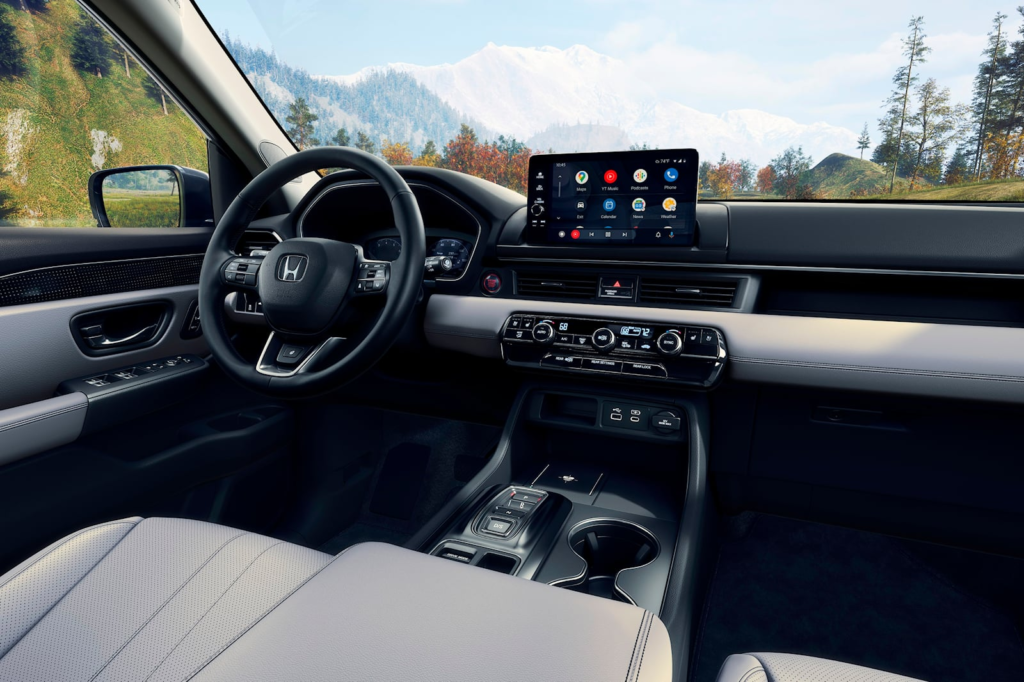
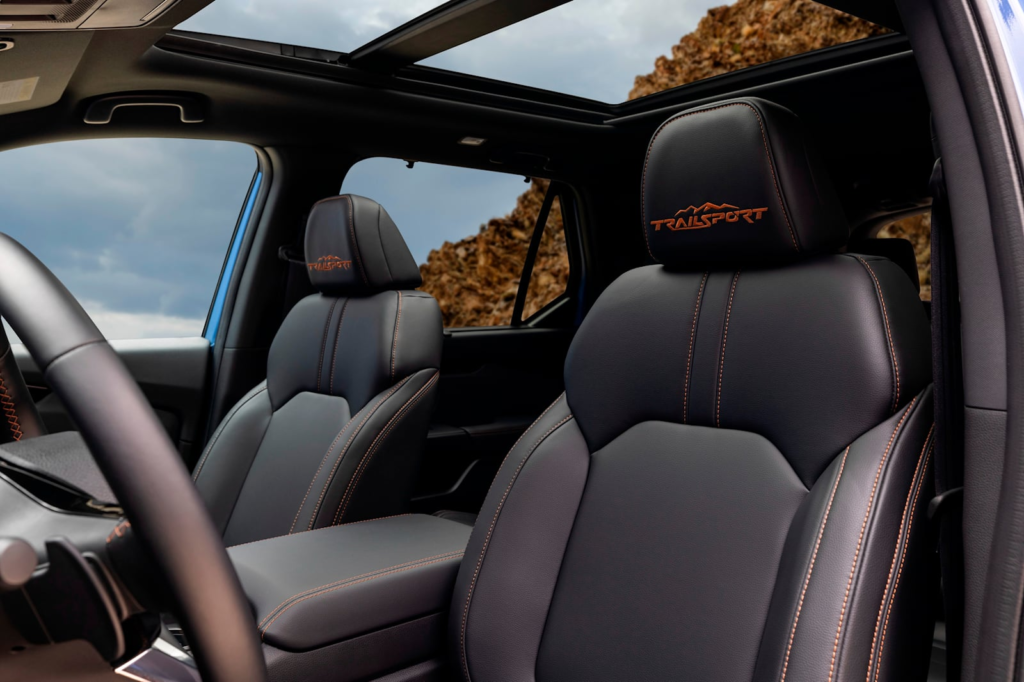
Off-Roading: Ready For The Advanced Trails
During half of the test drive of the latest Honda Pilot, it was taken on an off-road adventure in the beautiful mountain trails of Arizona. What was anticipated to be a casual drive over some dirt turned out to be a challenging climb up steep obstacles. The Pilot TrailSport, which is specifically designed for off-roading, demonstrated that it could handle much more than the typical family would encounter. The one-inch lift on the TrailSport came in handy when navigating over obstacles and if there was a miscalculation in judging the steepness of the terrain, the steel skid plates protect the majority of the vital components underneath the vehicle.
The all-terrain tires significantly enhanced traction, even in wet conditions, and the second-generation i-VTM4 all-wheel-drive system made off-roading effortless, even for those who are inexperienced. The system includes a more robust rear differential that can manage up to 40% more torque, allowing for quicker response and greater grip as needed. Honda states that up to 70% of the engine torque can be sent to the rear, and up to 100% of that can be distributed to the left or right wheel as needed. During the test drive, the new Trail Mode was fully utilized, which calibrates the throttle and all-wheel-drive system for off-roading and activates the 360-degree TrailWatch camera system.
Interior Look
The new Honda Pilot boasts a more spacious cabin, with increased rear legroom of 2.4 inches and extra space in the third row by 0.6 inches. The second row of seating is flexible, with sliding seats and up to 10 degrees of incline for optimal comfort. On the eight-passenger model, the middle seat can be removed and stored in the trunk, while the TrailSport model features standard second-row captain’s chairs for a seven-seat layout. The front seatbacks even feature pockets to store phones and other devices, making it even more convenient for passengers.
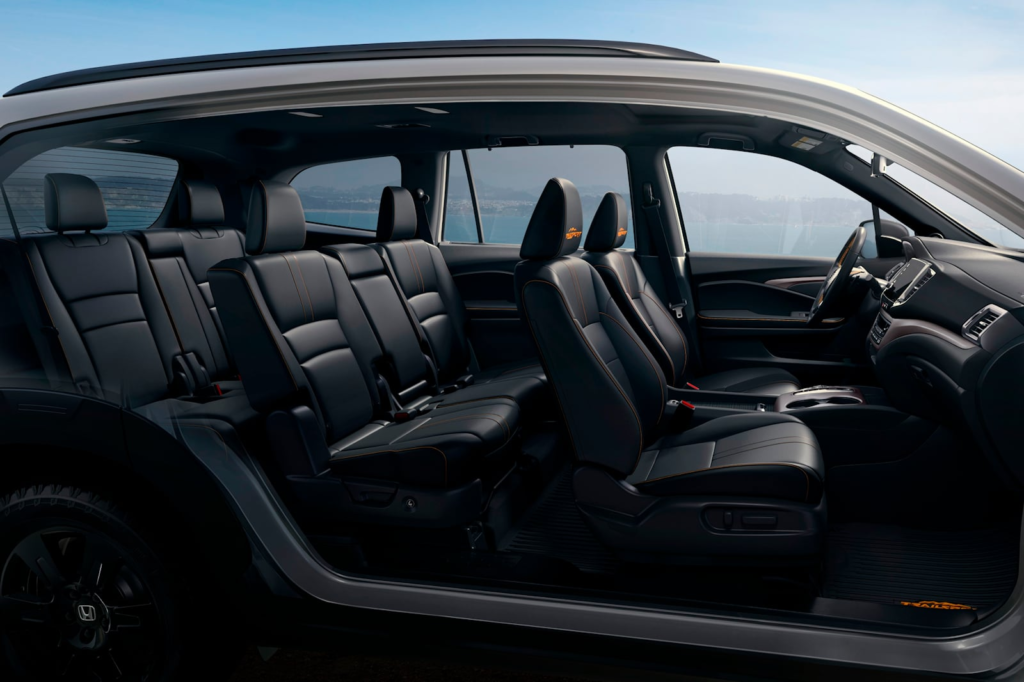
In terms of comfort and convenience, the Pilot does not disappoint. With a total of 14 cupholders, 8 of which can accommodate 32-ounce water bottles, and a useful storage shelf in front of the passenger, passengers will have plenty of space to store their belongings. The materials used in the cabin are of high quality, particularly in the Elite and TrailSport trims. The Elite trim comes with heated and ventilated front seats, as well as heated rear seats, while the base Sport trim features a seven-inch touchscreen. Higher trims offer a larger nine-inch touchscreen, and all models come equipped with wireless Apple CarPlay and Android Auto. The driver information interface on all models is a seven-inch screen, while the top-end Elite has a 10.2-inch digital instrument cluster as standard.
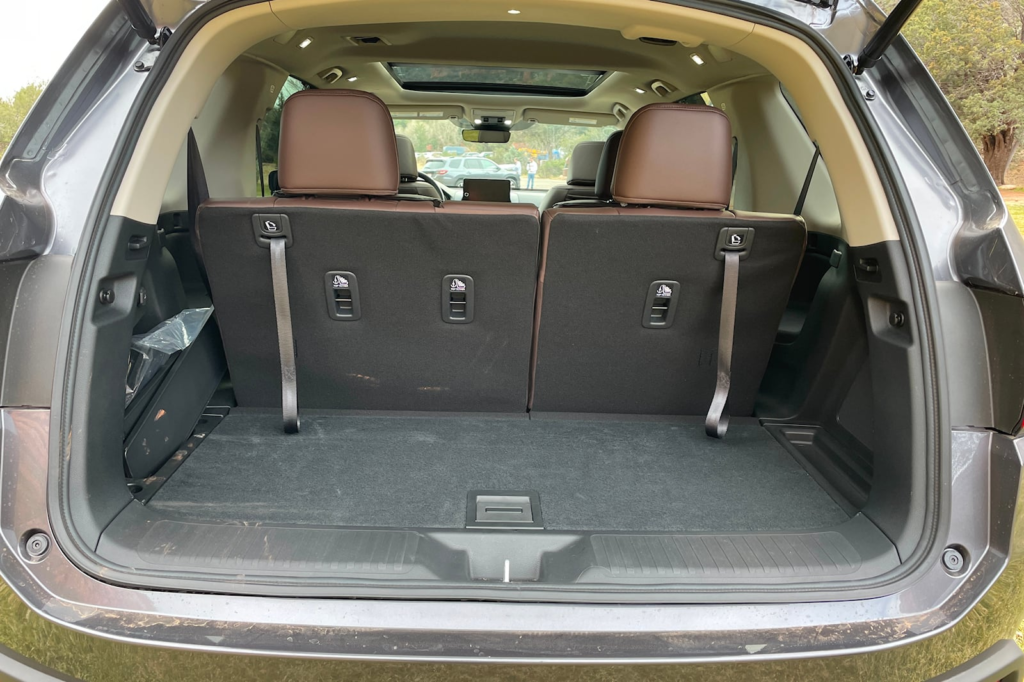
Pricing: On-Par With Other Three-Rows
The starting price for the 2023 Honda Pilot Sport is $39,150 (excluding the $1,345 destination and handling fee). This puts it at a higher price point than the base models of competitors such as the Hyundai Palisade, Kia Telluride, and Toyota Highlander. The addition of all-wheel drive (AWD) to any of the Pilot trims increases the cost by $2,000. The EX-L trim, which comes as a standard eight-seater, has a retail price of $41,950, with the option to upgrade to second-row captain’s chairs for an additional $300. The Touring trim offers more luxury features for a price of $46,450.
The TrailSport model comes with fewer features than the Touring but adds standard AWD and improved off-road capability, priced at $48,350. The top-end Elite trim, which also comes with AWD, has a price tag of $52,030, which is in line with other mid-size three-row SUVs in its class.
Verdict: The New Rugged Option
The latest fourth-generation Honda Pilot is perfect for owners who loved their first or second-gen Pilot but felt that the third-gen was too soft in terms of design. With improved styling and the rugged TrailSport trim, the Pilot is a great option for families who enjoy outdoor activities and camping trips. Although it may not keep up with the likes of 4Runner or Wrangler, it can climb higher than other SUVs like the Ford Explorer Timberline, Nissan Pathfinder Rock Creek, or Volkswagen Atlas Basecamp.
While the Hyundai Palisade and Kia Telluride still remain the most well-rounded options in this segment, the Honda Pilot offers a more spacious interior with increased cargo space and improved off-road capabilities. If these are your priorities, then the new Pilot is worth considering.
